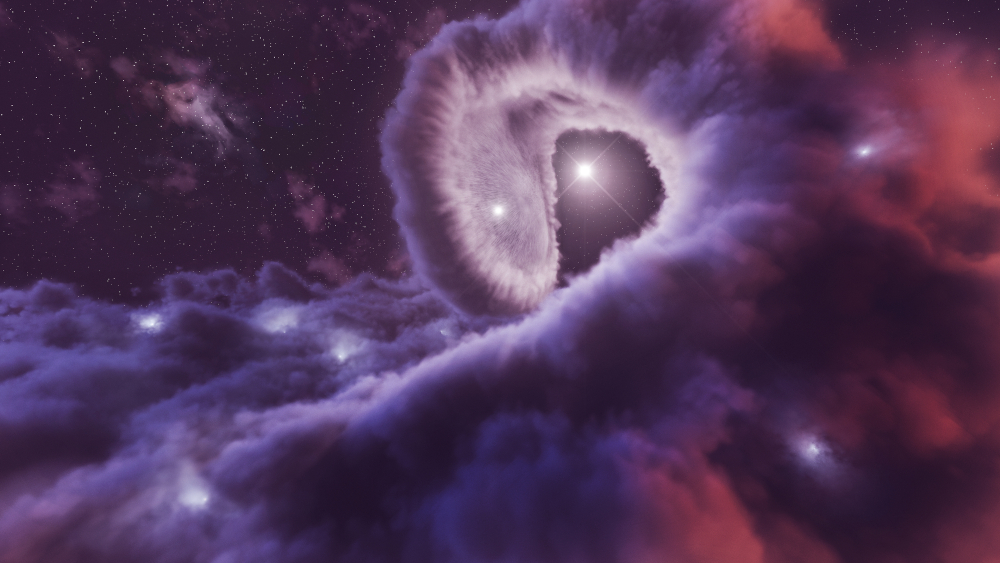
 Credit: DESY, Science Communication Lab
Credit: DESY, Science Communication Lab
A Very LHC
Things in space are continuously smashing into other things. Good examples are stars that explode and produce fast-moving ejecta that collide with surrounding interstellar gas and dust, creating beautiful, life-giving and deadly supernova remnants. But exploding stars explode only once, so it's hard to reproduce the physical conditions in controlled ways to test how such collisions take place in detail. Scientists of course like reproducible results, and fortunately, nature obliges. Colliding wind binary systems provide one type of controlled astrophysical laboratory. In these systems, two stars with extremely powerful stellar winds, blowing at speeds of millions of miles per hour, are gravitationally bound to each other. The powerful wind from one star will inevitably collide with the powerful wind of the other star in the space between, as shown in the image above; and, as the stars revolve in orbit, the shocks collide at different matter densities and velocities, allowing scientists to see how these strong shocks respond to repeatable, changing physical conditions. One such system is the supermassive eta Carinae binary system. Eta Car is composed of one of the most massive, most luminous stars know (about 100 times more massive than the Sun, and a few million times more luminous), orbited by a massive, luminous companion star that has never been directly seen. The orbits of the two stars are extremely eccentric, meaning that the separations between the two stars change by about a factor of 10 through its five-and-a-half-year orbit. The collision of the strong, slow wind from the brighter star with the fast, thin wind of the companion star produces variable X-ray emission as the stars revolve, and other high energy emission as well. New observations with the High Energy Stereoscopic System (H.E.S.S) telescope (a set of ground-based telescopes located in the Khomas Highland of Namibia) shows that even more energetic gamma-ray radiation is produced by eta Car - up to 100 billion times the energy of visible light. The extraordinary gamma-ray emission detected by H.E.S.S. is believed to be produced by fast moving atomic nuclei - making eta Car a kind of celestial Large Hadron Collider.
Published: July 27, 2020
<
HEA Dictionary ● Archive
● Search HEAPOW
● Other Languages
● HEAPOW on Facebook
● Download all Images
● Education ● HEAD
>

Each week the HEASARC
brings you new, exciting and beautiful images from X-ray and Gamma ray
astronomy. Check back each week and be sure to check out the HEAPOW archive!
Last modified Tuesday, 27-Feb-2024 10:10:05 EST


